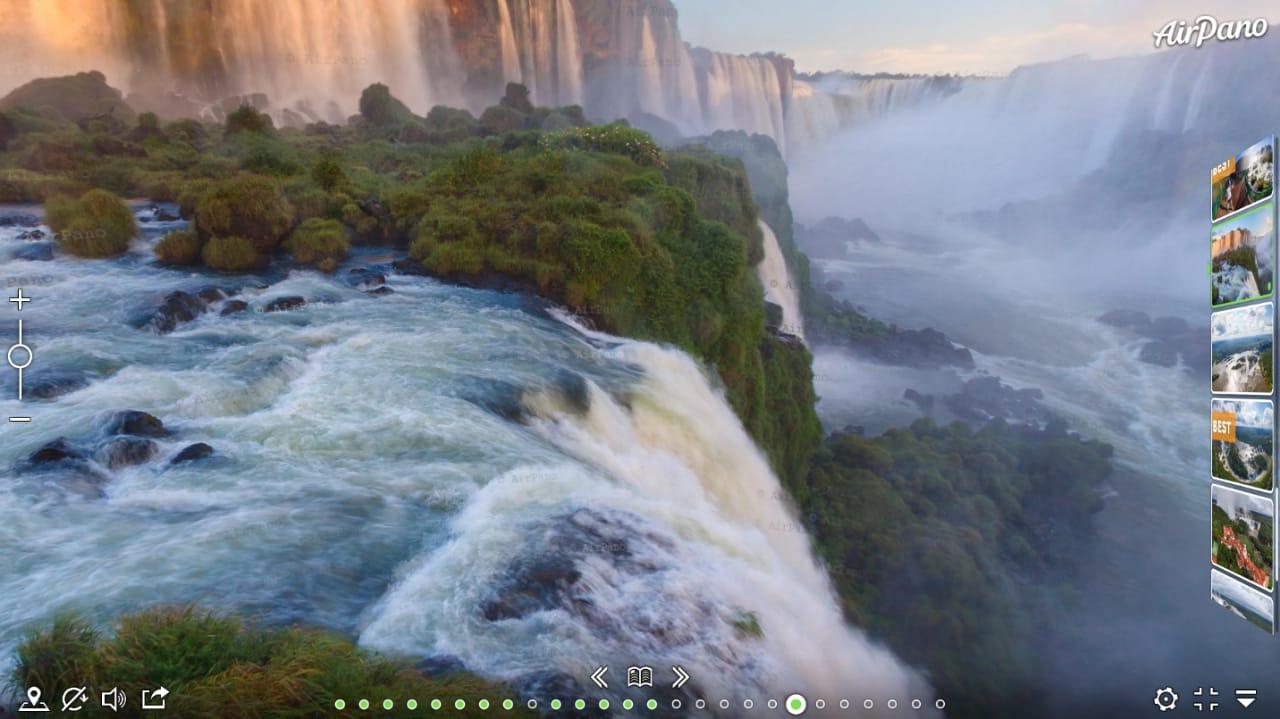For the virtual field trip, I opted to take the Iguazu falls virtual field trip. The virtual field trip was a collection of 26 photographs taken from a helicopter featuring different angles and areas of the Iguazu falls. The Iguazu falls is an official wonder of nature that is located at the border between Argentina and Brazil. The falls collectively make up the largest waterfall system in the world with up to 300 waterfalls depending on the season of the year visited. The waterfalls are so vast that they tend to create their own ‘wrong waterfalls’ which are created from light reflected and refracted through water droplets suspended in the air.

The waterfalls are arranged in a horseshoe shape which at some viewing points, can be viewed at a 260-degree angle meaning the viewing point is almost surrounded by the majestic waterfalls. One of the best things about the virtual trip tour was that it was possible to have both wide-angle photos that capture the vastness and majesty of the falls, and also zoom in on certain points of the tour. For instance, one could zoom in on a vantage point such as the viewing the platform at the Santa Maria on the Brazilian. The option allows one to have a more realistic view of the falls as they would see it had they gone to the falls and experienced the view from one of the viewing platforms.

The other thing that I specifically liked about the virtual field trip is that some of the photographs captured featured the geographical tags of each zone of the Iguazu falls. Due to the expansive nature of the falls, it could be difficult to fully understand the geographical layout of the area by just looking at the photos, especially for a person or student who has never been there. However, the geographical tags and information allow one to fully grasp and picture the falls as if they were there. As one navigates through the other photos and images with the captions, it is easier to understand which parts of the falls you are viewing due to the geographical tags.
All in all, the virtual field trip was a collection of wide-angle and zoomed-in photographs of the Iguazu falls. The photos each had a caption explaining which specific part or vantage point of the falls was captured in the photograph, allowing one to fully picture and view the falls as if they were physically there. The virtual tour also included background music that I feel appropriately captures the theme and mood I had while viewing the majestic falls. The background music was entertaining enough to keep one focused on the tour. Virtual tours like these would be amazing within the classroom to explain certain points and geographical areas such as the falls. They allow the student to have an experience of these geographical sites without even leaving their classroom/home. I would consider integrating virtual tours into my future classroom to have my students better understand and visualize some of the content presented to them.